Waste oil recovery is critical to any application for a multitude of reasons. Many companies try, or should being trying (tsk tsk if you’re not), to recover their used oil in order to stay in compliance with government standards and regulations. No one wants to pay a massive fine or even worse, donning the orange jump suit with silver bracelets, when simply complying with the law and keeping our environment clean is a simple enough task.
Additionally, recovering used oil has its monetary perks. Reclaimed hydrocarbons can be sold for profit and by removing it properly can help extend the life of equipment, waste water, or coolant. All while Mother Earth smiles and the people rejoice. Everybody wins.
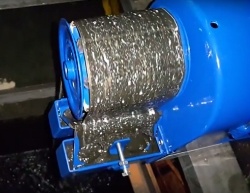
It might not be pretty, but this is what successful waste oil recovery looks like!
If you’re not reclaiming your used oil than you are awarded no points, may not collect $200, or pass Go. If you are, you get all of the points. However, if you are doing this but NOT taking care of the equipment that is helping you reclaim that used oil, then you are just as much a part of the losing team.
Just like any piece of equipment; cars, computers, those 5-in-1 breakfast sandwich maker machines, all of them need tinkering and routine maintenance in order to keep the gears turning and the eggs fluffy. With that being said, oil skimmer maintenance is crucial in not only ensuring proper waste oil recovery, but overall success of your entire operation.
Over the years we have seen some troubling scenes. The things people do to oil skimmers…it is horrific. Years upon years of oil and incalculable layers of gunk encrusted all over the machine. Discharge valves clogged to the point where the skimmed content barely drips out. THE ORIGINAL BELT. For shame. All of you.
If you’re not familiar with how oil skimmers work, here’s a quick overview: Although designs vary, all oil skimmers rely on specific gravity, surface tension and a moving medium to remove floating oil from a fluid's surface.
Floating oil and grease cling to skimming media more readily than water, and water has little affinity for the media. This allows skimming media in the shape of a belt, disk, drum, etc. to pass through a fluid surface to pick up floating oil and grease with very little water. This oily material is subsequently removed from the media with wiper blades or pinch rollers.
Oil skimmers are simple, dependable and effective tools for removing oil, grease and other hydrocarbons from water and coolants. Often, an oil skimmer by itself can achieve the desired level of water purity. In more demanding situations, oil skimming is a cost-effective means of removing most of the oil before using more complicated and costly treatments such as coalescers, membrane filters and chemical processes.
Simple enough, right?
So how do you know when it is time to show your oil skimmer some TLC? Here are some things to look out for:
1) Are the wiper blades on your oil skimmer making smooth contact with the belt?
Somewhat of a common sense point but still worth mentioning. In order to successfully skim away the hydrocarbon, the wipers on the skimmer need to hit the belt perfectly. And this applies to any type or brand of skimmer. If the wiper blades are covered in goop, covered in debris, or if they are old and worn down, the skimmer will not be able to operate as intended. If you think something is amok with the way your oil skimmer is skimming, start with the wiper blades. They are an easy fix and new blades can make a world of a difference.
2) Is the belt riding away from the sides of the pulley?
Is the oil skimmer wobbly? Does the whole operation seem wonky? If things appear off, then they probably are. Double check to make sure that the oil skimmer is level in the tank, pit, sump, or well. If things still seem off, then see common sense point 1 about making sure the wipers are clean and not warped.
3) Has the belt seen better days?
Then replace it! Belts will typically last a long time, but as the great Robert Frost so poetically said, “Nothing gold can stay”. Belts will operate even past the point that they should. However if you notice any fraying or tears, even if it is slight, it would be in your best interest if you replaced the belt. And going back to bullet point one, if your wipers are sketchy then they are going to mess your belt up.
Still unsure about what you shouldn’t do?
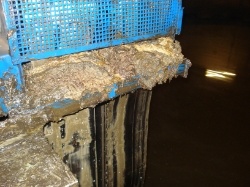
Don't do this!
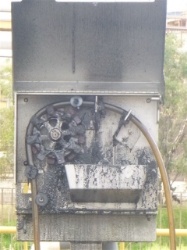
Or this!
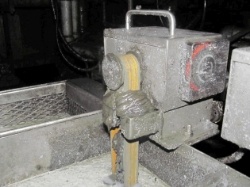
Gross. Don't do this.
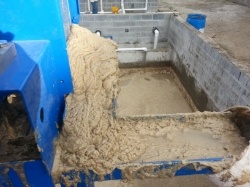
You get it, right?
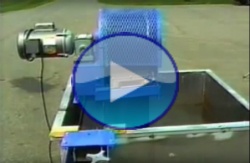
Here is a video demonstrating what should be happening with an oil skimmer
Oil skimmers are very simple pieces of equipment that can help you tackle a very serious wastewater issue. They are a low-cost and environmentally sound solution to waste oil recovery. They are by no means high-maintenance or difficult to use, but do require some routine work every now and then and a little tinkering here or there. Bottom line is, replacing a wiper blade system or belt on an oil skimmer beats having to pay a fine to your respective government environmental agency. If you are not sure about the laws are regarding wastewater in your area, we have a handy database of environmental links indexed by location for you to use. If you are still not sure how to troubleshoot your skimmer’s issues then contact your sales rep for tips and pointers.



